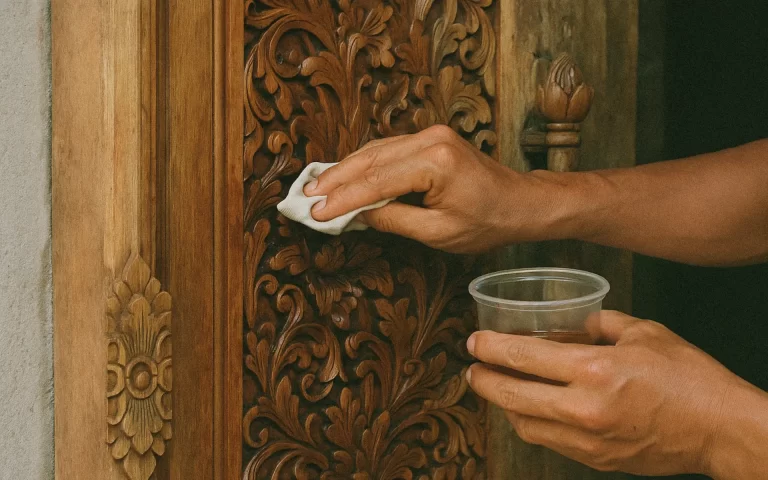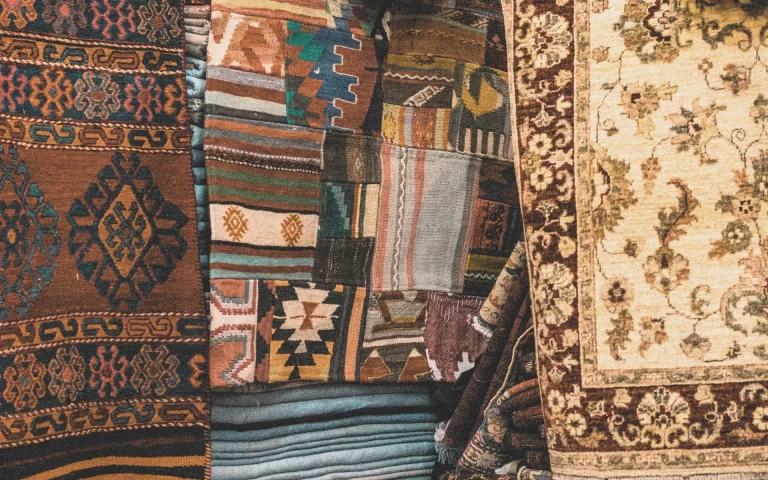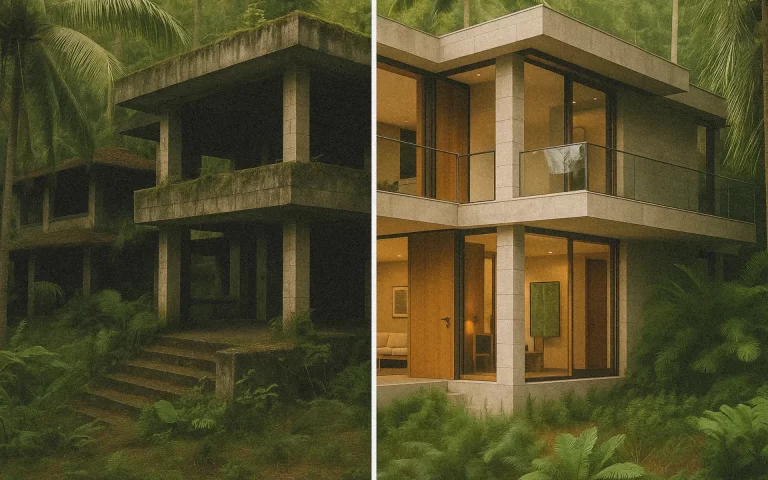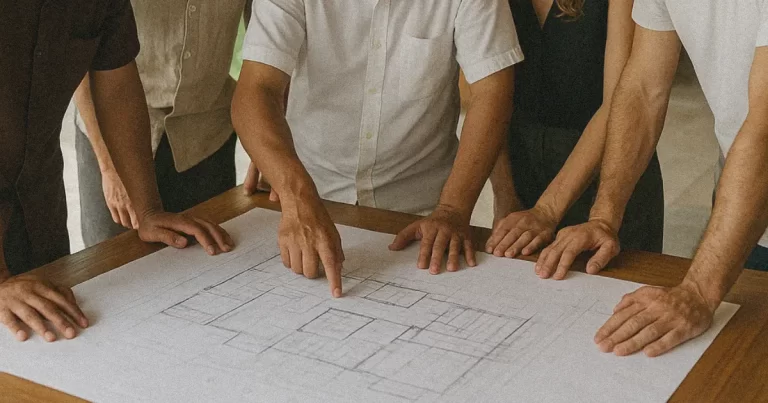When you search “Balinese interior design,” you’re likely to be hit with an algorithmic sea of sun-bleached rattan, white-on-white villas, and boho dreamcatchers — a look that’s better described as Tulum expat chic than authentically Balinese.
And while there’s nothing inherently wrong with breezy coastal minimalism, reducing Balinese aesthetics to “light wood + linen” misses the mark — and erases a rich tradition of sacred geometry, craftsmanship, and context-driven design that spans centuries.
So what is Balinese design, really?
1. It’s Symbiotic With Nature — Not Just Natural Looking

True Balinese architecture is designed in dialogue with the landscape, not just styled to appear “earthy.” Traditional Balinese homes follow Asta Kosala Kosali — a spiritual spatial philosophy similar to feng shui — that dictates orientation, balance, and proportions in harmony with Mount Agung (sacred) and the sea (chaotic).
This manifests in:
- Open-air pavilions that encourage wind and light
- Water features and courtyards that channel energy
- Structures that mimic the rhythm of surrounding rice fields
Unlike the prefab villas that litter Airbnbs today, traditional Balinese design is site-specific, never generic.


2. It’s Made by Hand, Not Trend
Craftsmanship is the soul of Balinese aesthetics. Traditional structures feature:
- Carved teak and ironwood beams
- Hand-chiseled stone reliefs
- Thatched alang-alang roofs tied without nails
These aren’t just decorative flourishes — they’re coded stories and spiritual markers, passed through generations of artisans who train for years.
The imitation rattan bar stool at your nearest beach café may nod to “island vibes,” but it doesn’t carry the same ancestral intention — or the durability.
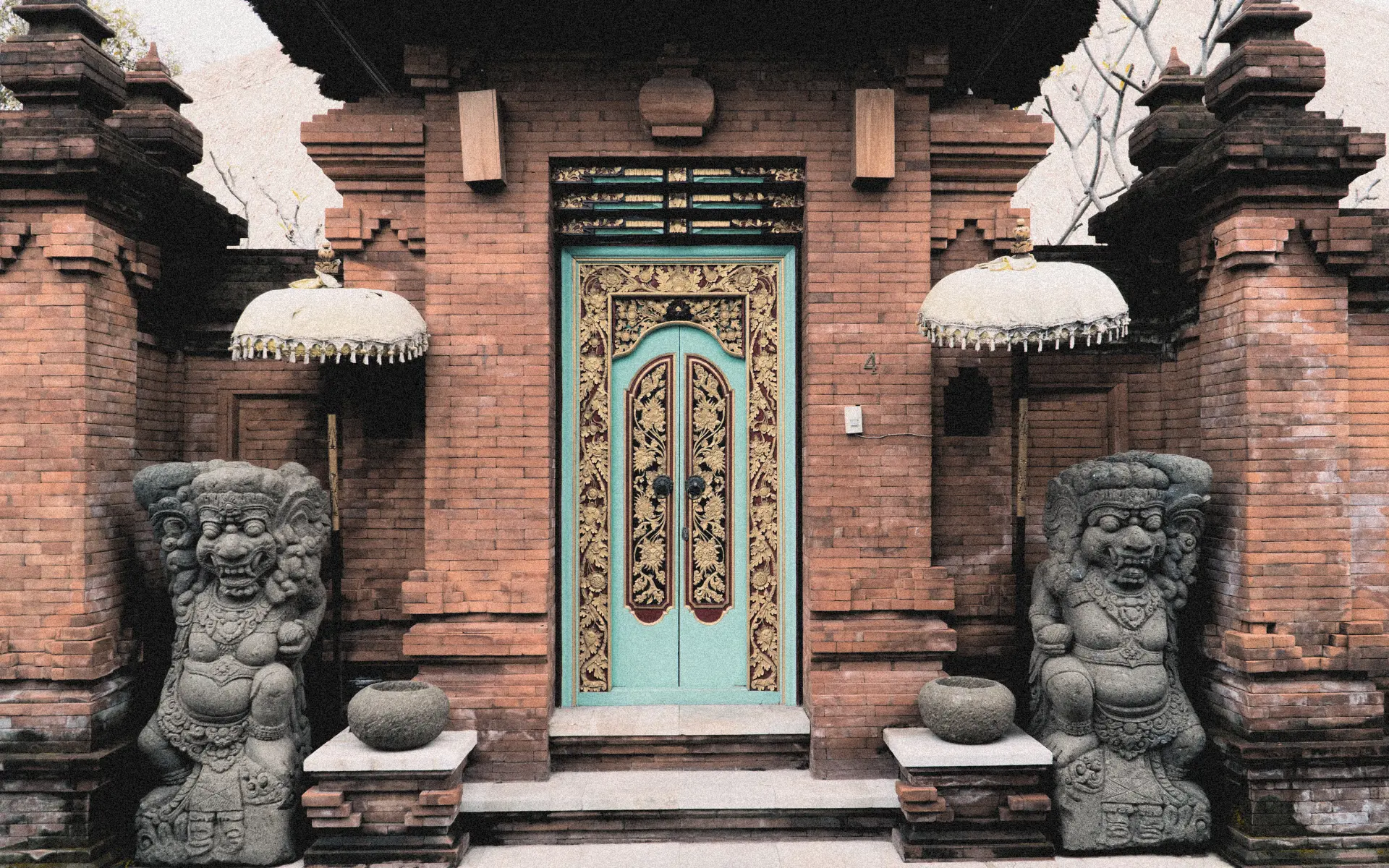
3. Ornamentation Isn’t Superficial — It’s Symbolic
Balinese design is often ornate — but not in a gaudy, maximalist way. Every element has cosmological significance. You’ll find:
- Guardian statues at gates to ward off spirits
- Roof tiers that represent layers of the universe
- Offerings placed throughout the home to maintain harmony
This isn’t clutter. It’s ritualized space.
Design is not just about how something looks, but about how it functions as part of a spiritual ecosystem.
4. It’s Temporal — Meant to Change Over Time
Many Balinese materials are biodegradable. Bamboo, thatch, and natural dyes weather quickly — but that’s part of the design. Homes are meant to age, decay, and be rebuilt.
This ephemeral approach contrasts sharply with modern minimalist interiors that are built to look untouched forever. In Bali, impermanence is embraced — not avoided.
5. It’s Inward Facing — Not Performed for Instagram
Traditional Balinese compounds are typically enclosed — structured around a private central courtyard, not a dramatic pool deck angled for drone footage.
While modern resorts often capitalize on “views” and exposure, Balinese architecture favors privacy, ceremony, and community. It’s built for family, ritual, and rest — not clout.
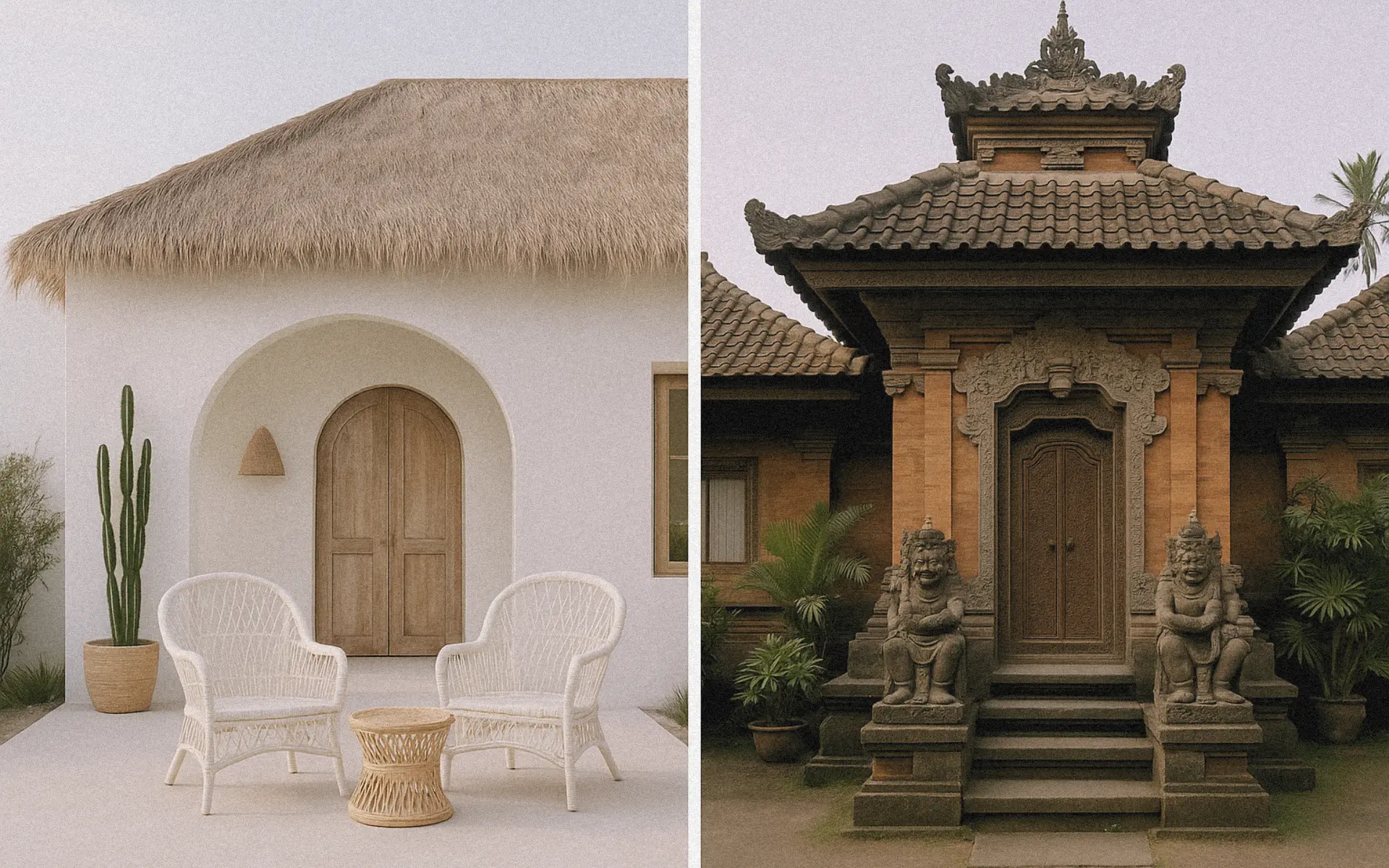
So Why Does This Matter?
Because design has cultural weight.
When we conflate Balinese design with whatever’s trending on Pinterest — or export it without context — we flatten something nuanced into a lookbook. Understanding what actually makes a space Balinese requires more than taste — it requires respect.
If you want to draw from Balinese design, dig deeper than wicker furniture. Learn about the architecture, the ceremonies, the spatial philosophy. And maybe leave the dream catchers at home.

